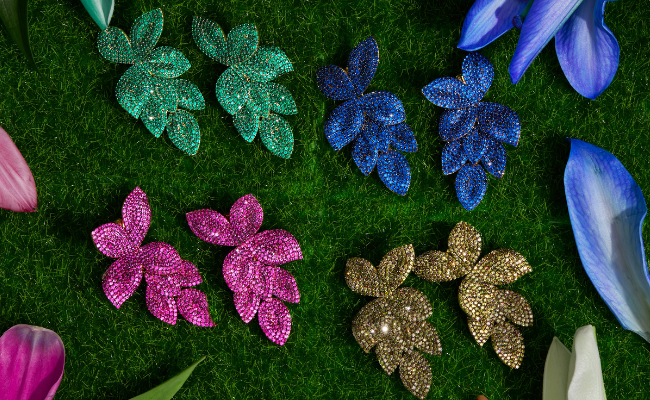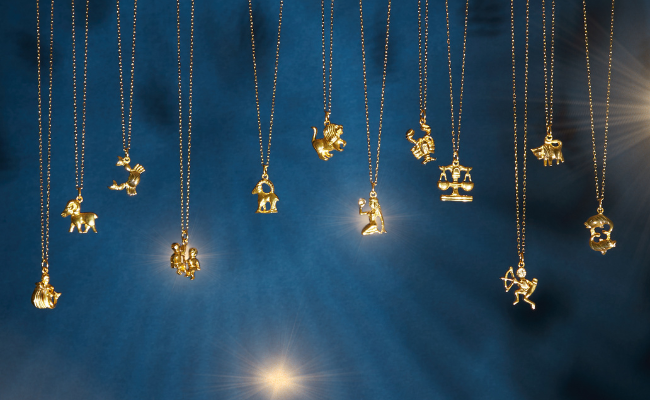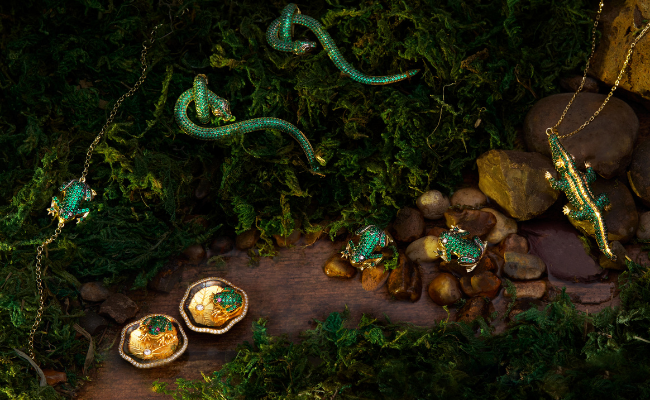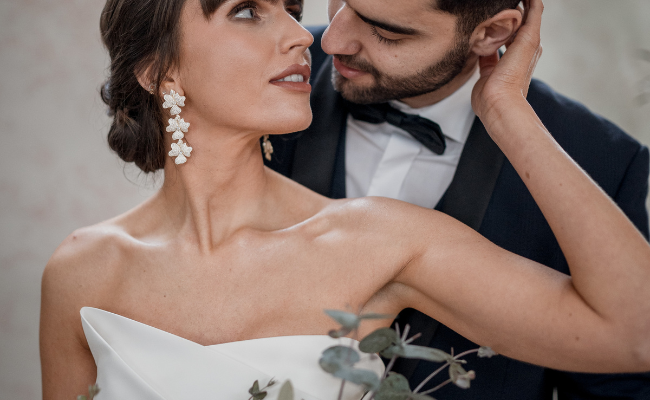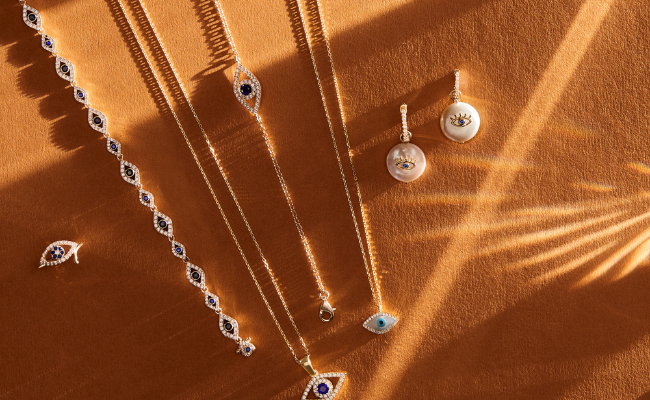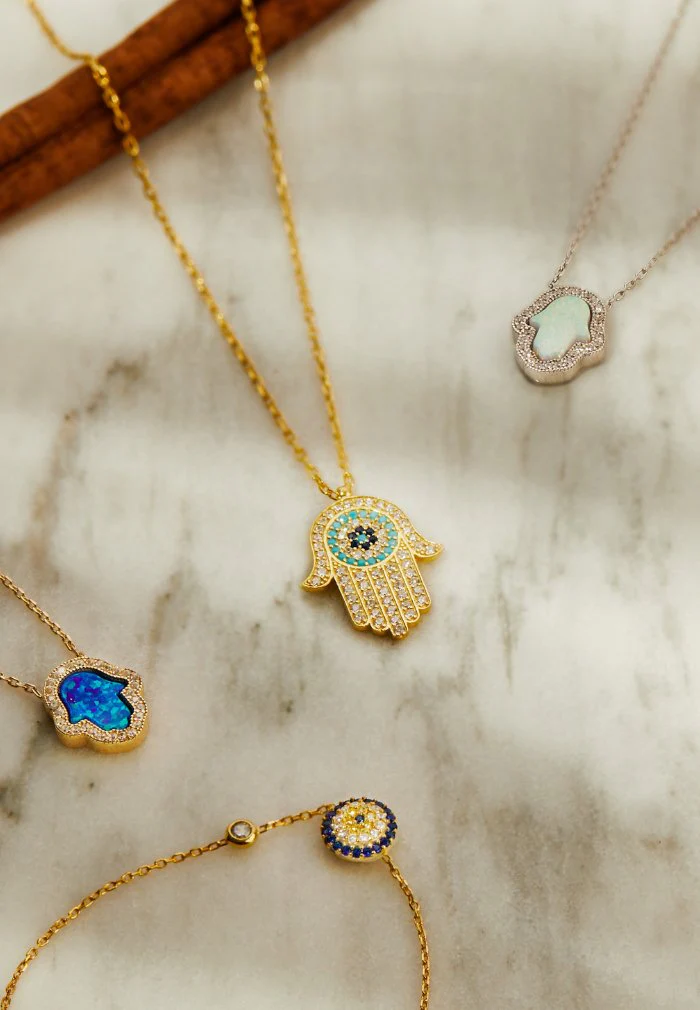
What Is The Hamsa Hand? A Guide To Hamsa Hand Jewellery
Welcome to the world of Hamsa Hand jewellery! If you’ve ever seen a pendant, bracelet or charm with an eye-like symbol and wondered what it is, then look no further. The Hamsa hand is a representation of ancient beliefs that are still used today in various cultures around the world as both adornment and protection. This blog post explores the meaning behind this unique logo, why it continues to remain popular around the globe and offers up our top pieces for those looking to add some Hamsa Hand jewellery into their wardrobe.
What is the Hamsa Hand and what does it symbolize
The Hamsa Hand, also known as the Hand of Fatima, is a symbol of protection and good fortune in many cultures. This ancient talisman takes the form of a hand with an eye in the center, and its origins can be traced back to the Middle East. The Hamsa Hand is believed to ward off evil spirits and bring an abundance of blessings to its owner. It's often used as a decorative element in jewelry, home decor, and other objects. The symbol's popularity has spread throughout the world, making it a universal symbol of peace and protection. Whether you wear it as a piece of jewelry or display it in your home, the Hamsa Hand serves as a constant reminder of the power of positivity.
The history of the Hamsa Hand and its origins in Middle Eastern culture
The Hamsa Hand is an ancient symbol that has a rich history in Middle Eastern culture. This hand-shaped amulet is believed to protect against the evil eye and bring good luck to those who wear it. Some historians trace the origins of the Hamsa Hand back to ancient Mesopotamia, while others believe it originated in ancient Egypt. Regardless of its exact origin, the Hamsa Hand has become a powerful symbol of protection and good fortune across the Middle East and beyond. Its intricate design, featuring five fingers to represent the five senses, has made it a popular decorative item and a cherished family heirloom. As you explore the rich history of the Hamsa Hand, you'll discover a fascinating connection to the cultures and beliefs of the Middle East.
Is it okay to wear the Hamsa Hand
The Hamsa Hand is a popular symbol in many cultures and religions, believed to provide protection, happiness, and good fortune. However, some people debate whether it's appropriate to wear the Hamsa Hand, especially if you don't understand its spiritual significance. While it's ultimately up to personal interpretation, many followers of Judaism and Islam believe that the Hamsa Hand is a sacred symbol, and wearing it without proper knowledge or respect can be disrespectful and offensive. Ultimately, it's important to educate yourself on the cultural significance of symbols before wearing them to show respect and appreciation for their spiritual meanings.
What is the difference between the evil eye and the Hamsa Hand
Throughout history, cultures around the world have had various beliefs and practices surrounding the concept of the Evil Eye. One of the most prominent symbols associated with protection against the Evil Eye is the Hamsa Hand, a popular amulet in both Jewish and Islamic cultures. While both the Evil Eye and the Hamsa Hand are believed to have protective qualities, they differ in their origins and specific forms of protection. The Evil Eye is typically associated with envy and negative energy, while the Hamsa Hand is designed to bring good fortune and ward off evil spirits. Despite their differences, both the Evil Eye and the Hamsa Hand have become cultural icons and popular symbols of protection used throughout the world.
Should the Hamsa Hand be up or down
The Hamsa Hand, an ancient symbol of protection and good fortune, has been used for centuries to ward off evil and bring luck to its wearers. However, one debate that continues to divide believers is whether the hand should be facing up or down. Many argue that having the fingers pointing upwards represents a welcoming gesture, inviting positivity and abundance into one's life. On the other hand, some claim that the downward-facing hand symbolizes a more grounded approach, repelling negative energy and keeping one rooted in reality. Ultimately, the decision may come down to personal preference and what resonates most with each individual. Regardless of which way it's facing, the Hamsa Hand remains a powerful symbol of protection for all who believe in its magic.
What is the religion of the Hamsa Hand
The Hamsa Hand is a symbol that can be found in many cultures around the world. It's commonly referred to as the Hand of Fatima in Islamic culture, and the Hand of Miriam in Jewish culture. However, this symbol is not limited to just those two religions. It has also been associated with Buddhism, Hinduism, and other belief systems. The Hamsa Hand is often seen as a protective talisman, meant to ward off the evil eye and offer protection to those who wear it. It is truly a fascinating and meaningful symbol, with a rich history and far-reaching influence.
Can you wear evil eye and Hamsa Hand
The Hamsa Hand has been a symbol of protection in many cultures for centuries. It is said to carry positive energy and protect the wearer from harm. The evil eye, on the other hand, is often seen as a negative force, with the power to cause harm through jealousy or envy. So, can you wear both symbols at the same time? The answer is yes! In fact, many people wear the Hamsa Hand and the evil eye together for added protection and blessings. It's all about intention and what these symbols mean to you personally. Embrace the power of the Hamsa Hand and the evil eye and wear them with pride.
Do Muslims wear evil eye bracelets
Many Muslims around the globe believe in wearing Hamsa Hand or evil eye bracelets for protection against bad luck and negative energies. These bracelets are designed with intricate patterns and bright colors, making them both fashionable and functional. The Hamsa Hand, incorporated into the design, is believed to ward off evil spirits and offer a sense of peace and serenity. While not all Muslims wear these bracelets, they hold a special place in the hearts of those who do, serving as a tangible reminder of the power of faith and spirituality. Ultimately, the decision to wear a Hamsa Hand bracelet is a personal choice, but for those who do, they serve as a symbol of hope and protection.
What are the rules of wearing an evil eye bracelet
Are you intrigued by the mysterious world of amulets and talismans? Evil eye bracelets, also known as Hamsa Hand bracelets, are believed to protect their wearers from negative energy and harm. If you're new to wearing an evil eye bracelet, it's important to follow a few basic rules. Firstly, it's typical to wear the bracelet on your left wrist, as this is believed to be the receiving side of the body. Secondly, avoid wearing the bracelet while sleeping or bathing as this can damage the bracelet and weaken its protective properties. Lastly, it's important to focus on positive thoughts and intentions while wearing your bracelet in order for the amulet to work effectively. So, if you're curious about giving this talisman a try, keep these guidelines in mind for maximum benefits.
What does the bible say about the evil eye
The term "evil eye" refers to the notion that certain individuals have the ability to cast a curse through their gaze, resulting in harm or misfortune to the recipient. Although not explicitly mentioned in the Bible, the concept of the evil eye can be traced back to ancient times and is mentioned in various cultures and religions. In Judaism, for example, the belief in the evil eye is prevalent, and many Jews traditionally wear the Hamsa Hand as a talisman to ward off its effects. While the Bible does not specifically mention the Hamsa Hand or the evil eye, it does warn against envy and covetousness, highlighting the importance of gratitude and contentment over material possessions.
What happens when the evil eye breaks
According to ancient beliefs, the evil eye is a curse that causes harm or misfortune to those who are unaware of its impact. However, what happens when the evil eye breaks? The answer lies in the Hamsa Hand, a symbol of protection that brings good luck and ward off negative energies. In many cultures, breaking the evil eye signifies the end of negativity and the opening of new doors. The Hamsa Hand is believed to bring good fortune, success, and protection against evil forces. It is a powerful amulet that has been used for centuries to protect people from harm, envy, and negativity. Hence, the breaking of the evil eye is seen as an opportunity to embrace positivity and good vibes through the protective powers of the Hamsa Hand.
Does it matter what evil eye you wear
The Hamsa hand, also known as the Hand of Fatima, is a popular symbol used for warding off the evil eye. Many people believe that the kind of evil eye you wear on your Hamsa hand matters. Some prefer to wear a blue eye, while others choose green or red. Whatever your preference may be, the important thing is that the Hamsa hand is believed to provide protection from harm. Whether you wear a blue, green, or red evil eye, the Hamsa hand is a powerful amulet that has been used for centuries to protect people from the evil eye. So, does it matter what evil eye you wear? Ultimately, it comes down to personal preference and what you believe will bring you the most protection and good luck.
Ultimately, the Hamsa Hand and evil eye symbolize different things in different cultures. In some cases the Hamsa Hand is thought to bring protection and in other instances it is interpreted as a spiritual sign or symbol of strength. The truth is that whether or not you choose to wear a Hamsa Hand or an evil eye bracelet depends on your own beliefs and cultural norms. While the history and origin of these symbols in Middle Eastern cultures are interesting, they have been adopted by people around the world for many reasons. Not only are they attractive accessories, but their meanings carry special significance from healing and security to lucky charms that bring good fortune. Whether you rock a golden Fatima hand with sparkling gems or a simple leather cord evoking protection, when you wear these symbols, they represent something special and empowering for you personally.

